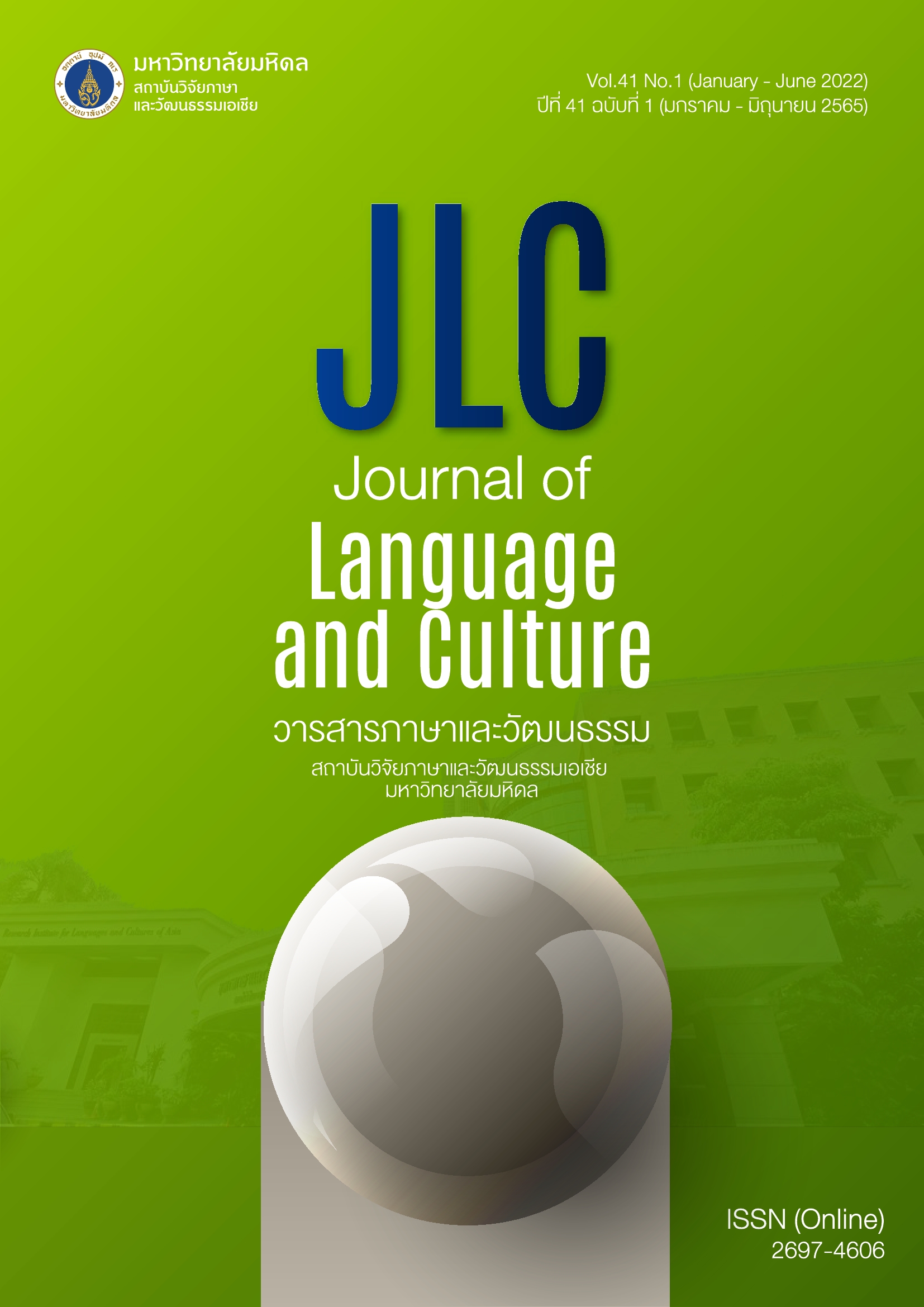Translating Thai metaphors in Tootsies & The Fake: Netflix's and KissAsian's subtitles
Main Article Content
Abstract
This study investigated translation procedures that Netflix’s and KissAsian’s translators used in translating metaphors from Thai into English in the subtitles. The sample was Tootsies & The Fake movie from which 174 metaphors were drawn. Adopting Newmark’s classification, the researchers categorised metaphors into six types. A synthesised typology based on Gottlieb’s, Newmark’s, and Vinay and Darbelnet’s typologies was employed for the analysis of the translation procedures that the translators of these two platforms resorted to. The results were presented by using quantitative and qualitative descriptions. The findings revealed that the eight procedures used for metaphor translation were paraphrase, transfer, imitation, dislocation, condensation, decimation, modulation, and hybrid. Hybrid, transfer, and paraphrase were the most frequently used procedures. Translation of metaphor by simile was not used by the translators. Further, the types of metaphors might influence the translation choices made by Netflix and KissAsian translators since the use of translation procedures adopted for recent, original, stock, and cliché metaphors by the translators of both platforms tended to correspond. Overall, the KissAsian subtitle is more idiomatic than the Netflix one. However, when the target text is more idiomatic, culturally specific elements are erased.
Article Details
The articles featured in the Journal of Language and Culture (JLC) constitute academic works representing the viewpoints of the respective author(s). It is crucial to note that these opinions do not necessarily reflect those of the Editorial Board.
All articles published in JLC are released under the Creative Commons Attribution 4.0 International License (CC BY 4.0). This license grants permission for unrestricted use, distribution, and reproduction in any medium, provided proper credit is given to the original author(s) and the source.


